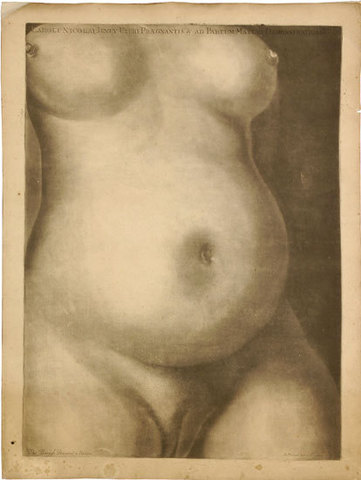Lorem ipsum dolor sit amet, consectetur adipiscing elit. Integer vel eros volutpat, consequat diam ac, eleifend dolor. Mauris risus ante, tempus in interdum elementum, consectetur id odio. Praesent lorem dolor, sollicitudin sed metus at, laoreet vestibulum dolor.
JENTY, Charles Nicolas (fl. 1720-1770)
Explicatio demonstrationis uteri prægnantis mulieris cum foetu adpartum maturi, in tabulis six, ad naturæ magnitudinem, post dissectiones depictis, et ea methodo dispositis ut hujus status gravidi amplam ob oculos ideam collocent.
London, Printed for the author, 1758.
-
More info

-
More info

-
More info

-
More info

-
More info

-
More info

-
More info

Related items
-

DEVENTER, Hendrik van (1651–1724)
Operationes chirurgicæ novum lumen exhibentes obstetricantibus, quo fideliter manifestatur ars obstetricandi, et quidquid ad eam requiritur: Instructum pluribus Figuris æri inci...
-

MERCURIO, Scipione (Girolamo, c. 1540–1615)
La Commare. Kindermutter, oder Hebammen Buch. worinnen von dem wunderbaren Werck der Empfängniß, u. Guburth eines Menschen; u. was deroselben anhänget; wie sich ein Weib vor d...
-

SIEGEMUNDIN, Justine (1650-1705)
Die Chur-Brandenburgische Hoff-Wehe-Mutter, das ist: Ein höchst-nöthiger Unterricht, von schweren und unrecht-stehenden Geburten, in einem Gespräch vorgestellet, wie nehmlich, d...
-

HOORN, Johan von (1662-1724) & PORTAL, Paul (1630-1703)
Den Swenska Wäl-öfwade Jord-gumman, hwilken grundeligen underwijser huru med en Hafwande handlas, en Wåndande hielpas, en Barna-Qwinna handteras, och det nyfödda Barnet skiötas ...
This obstetrical atlas with six mezzotint plates in large folio was first published in London, 1757, together with a 16-page booklet in octavo format with text in English: "The Demonstrations of a Pregnant Uterus of a Woman at Her Full Term. In Six Tables, as large as Nature. Done from the Pictures printed after Dissections by Mr. Van Riemsdyke. London, printed for, and sold by, the Author, at his House in Fetter-Lane, and all the eminent booksellers in Europe". The present Latin edition of the text appeared in 1758, followed in 1759 by a French edition with the plates re-engraved, and of which there is a copy printed in yellow ochre reproduced in Rodari. There were also a Latin-German edition (1761) and a Dutch edition (1793), all of which are very rare. Even though there were several editions, few complete copies have survived. Very little is known about Jenty, who was born in France and educated in Paris as a surgeon. He then moved to London, where he may have been teaching anatomy from his house in Fetter Lane. In 1762 he was a surgeon’s mate on an expedition to Portugal and then moved to Madrid, where a surgical work appeared in Spanish in 1766 under his name. Five of the six plates in Jenty’s atlas are drawn (not dissected) by Jan Rymsdyk, the skilful Dutch artist, who appeared in London about 1750 and was engaged by William Smellie to make the drawings for his great obstetrical atlas and also to ”one of the finest anatomical atlases ever to be produced”(Garrison-Morton), William Hunter’s Anatomia uteri humani gravidi (1774). In Jenty’s work, however, a different printing technique was used. The beautiful plates of pregnancy and parturition are rare examples of mezzotint, which was seldom used in medical illustration. Jenty used the mezzotint technic, ”the black art”, as he found ‘this method softer, and capable of exhibiting a nearer imitation of Nature’. He used some of the best engravers in England – Edward Fischer, Richard Purcell and Thomas Burgess, the latter also being the artist of the first plate, that of a torso of a pregnant woman. This copy is from the collection of David Schultz von Schulzenheim, who in 1754 was sent to London to learn more about inoculation of smallpox and also came to study obstetrics under William Smellie, who presented his Swedish colleague with a copy of his obstetrical atlas, A Sett of Anatomical Tables, now in the Hagströmer Medico-Historical Library.
Collation: Pp 16.
Binding: Contemporay boards. The text in smaller format is bound with the atlas.
References: Garrison & Morton, 6156.4 ; Thornton, J.L. Jan van Rymsdyk, 1982; Roberts & Tomlinson. pp 456-59; Rodari, Anatomie de la couleur, p 133; Bynum & Porter, William Hunter and the Eighteenth-Century Medical World (1985), pp 390-94. Waller 5152 (lacking the text).